Forests and Rangelands Success Story
Target Wells Fuels Treatment - "Chemical and Prescribed Fire"
The Carlsbad Field Office, Bureau of Land Management (BLM), New Mexico
National Fire Plan - Fuels Reduction
2008
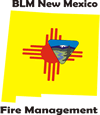
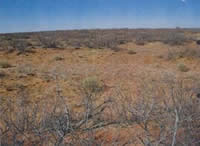
Target Wells Fuels Area before chemical and fire treatments.
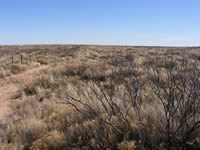
Target Wells Fuels Area after chemical treatments.
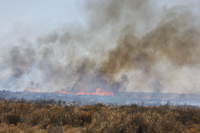
Target Wells Prescribed Fire.
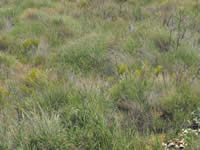
Target Wells Project area after prescribed fire and chemical treatments.
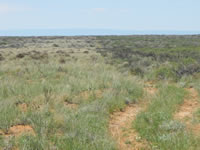
Post Treatment: Target Wells Project Area (left) and untreated area (right).
The Carlsbad Field Office is implementing a range health and improvement project within Eddy County, 20 miles southeast of Loving, New Mexico. This 10,098 acre project (9,320 BLM acres, 668 State of New Mexico acres and 120 private acres), was identified in 2003 as an area that would benefit from a brush control treatment. The primary objective of the Target Wells Fuels Treatment was to restore fire adaptive desert grassland. The benefits of the chemical and fire treatments include reduction in broom snakeweed densities, reduction in mesquite densities, reduction in tasajo cactus densities, and increase in native grasses.
The Target Well Fuels Treatment Project is a collaborative effort between the BLM Carlsbad Field Office, Fire, and Range Management, and rancher Tim Higginbottom, BLM grazing permittee. The project area, historically desert grassland with a 10 to 15 percent mesquite component, was composed of 80 to 90 percent mesquite, lacking an herbaceous component. Years of drought combined with historical grazing practices and a lack of fire resulted in a decrease in the density and composition of native grasses as well as an increase in exposed bare ground.
BLM Fire and Range personnel determined that for the restoration to be effective, the project must be completed in phases. In 2004, fuels funding supplemented Range Betterment Funds and phase one of the Target Well Fuels Treatment began with chemical treatment of the mesquite. Aerial application of Remedy (triclopyr) and Reclaim (clopyralid), both liquid herbicides, was completed in June 2004 on 6,500 acres of the project site. The mesquite treatment was successful and in the coming years, a variety of grasses and forbs began to appear. Rancher Tim Higginbottom was pleased with the results as were the BLM Range and Fire personnel.
In early 2008, phase two of the Target Well Fuels Treatment began as fire was applied to the landscape. Firefighters from Carlsbad, Roswell and Taos BLM completed the Target Well prescribed burn over a period of three days for a total of 10,098 acres. The burn was a success. Pre-treatment, the project area consisted of 14.0 percent grasses, 1.8 percent forbs, and 83.8 percent shrubs (primarily mesquite). Post-treatment, grasses increased to 54.5 percent, forbs increased to 16.6 percent, and shrubs decreased to 28.4 percent throughout the project area. The increase in grasses reduced the amount of exposed bare ground, resulting in a decrease in the amount of soil erosion. Additionally, the increase in grasses and forbs has benefitted a variety of wildlife species including upland game birds, mule deer, and raptors. Fire will continue to be used to control encroachment of shrubs and maintain the grassland community.
The success of the Target Well Fuels Treatment was widely recognized by private landowners, oil companies, the New Mexico State Lands Office, and the Natural Resource Conservation Service. Together, we are currently approaching our 500,000th acre chemically treated.
Contact: Jennifer Ward, Fuels Specialist, Carlsbad Field Office (575) 234-5944.